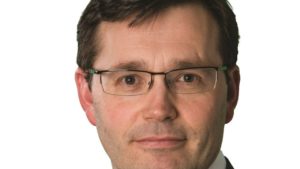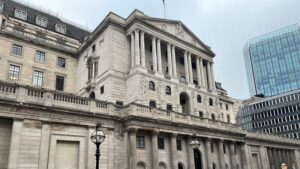Too much emphasis, he says, is placed on a company’s sales figures when what is more important is their ability to pay dividends.
He gives the example of Johnson & Johnson, a company that has not only increased its dividend payments each year for 46 consecutive years but has also seen dividends per share rise by 211% and earnings per share rise by 186% in the past ten years. Its high valuation in 2000 and the subsequent derating explain why its share price has grown by just 13%.
Sector rotation
Lance and his co-manager Nick Purves are contrarian, deep-value managers, who are happy to go to the cheapest parts of the market irrespective of whether or not they are popular. For instance, during the credit crunch they rotated from defensive stocks which became expensive to the more distressed and cheaper areas of financials, retail and media. Today their fund is once again focused on large cap high quality businesses.
And the main driver? Lance explains the index may be expensive but there are opportunities in out of favour, low value businesses with plenty of cash. Johnson & Johnson, for example, is trading at 12x earnings having been at 30x earnings in 2000.
He believes pharmaceutical and telecoms stocks are where tobacco stocks were ten years ago. British American Tobacco in 2000 was out of favour and lowly valued as part of the old economy, in an industry with declining volumes with modest market share growth; however, in the next ten years it generated 23% p.a. total returns due to its strong cash generation.
Through its strong balance sheet it bought back its equity so while the number of shares dropped, earnings per share increased, contributing to a 15% increased dividend per share between 2001 and 2010.
Balance sheet strength
Those companies with the largest free cash flows are the blue chips that do not normally set an investor’s world on fire such as Astra Zeneca, GlaxoSmithKline, Vodafone and the Dutch telecoms company KPN.
KPN, for instance, has a free cash flow yield of 15% of which 8.5% is its dividend yield leaving 7% of potential growth. In the past seven years it has paid out €6.8bn in dividends and bought back a further €9bn of equity. This equates to nearly 100% of its market capitalisation.
Future payouts look healthy with total shareholder return expected to be €2.2bn p.a. Or 14% of market cap.
“What will generate returns going forwards,” Lance suggests, “is companies that are incredibly cheap, that have chunky dividend yields with good dividend cover and that have the potential to generate cash and then use it sensibly."
“They may not be the most exciting but while markets are as uncertain as they are now, these companies are the ones that are better placed.”







